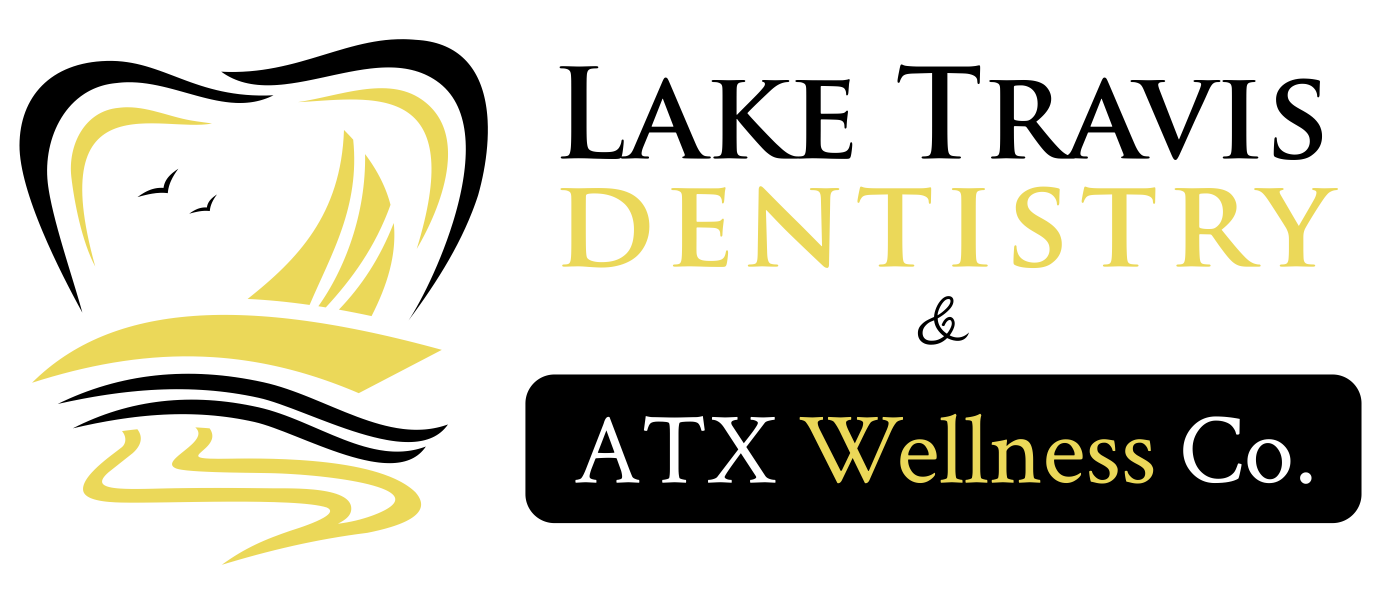- Membership
- Services
Integrated Wellness
Your journey to a radiant, healthy smile begins here!
- Insurance & Financing
- Smile Transformations
- Products
- About
Meet our accomplished team of doctors, devoted to providing expert care and personalized attention for your optimal dental well-being.
Get acquainted with our skilled and compassionate dental professionals—dedicated to ensuring your oral health and brightening your smile.
Here are the dental care blogs from Lake Travis Family & Cosmetic Dentistry. Our oral health blogs give you insights about dental treatments & oral health!
Get Invisalign Today and Save $1200

Tooth Extraction in Lakeway, TX

When it comes to maintaining optimal oral health, preserving your natural teeth is always the goal. However, there are instances when a tooth becomes severely damaged, decayed, or crowded, making tooth extraction the only viable solution. If you find yourself in need of a “tooth extraction near me, in Lakeway,” look no further than Lake Travis Family & Cosmetic Dentistry.
Our team of experienced dentists specializes in providing gentle and effective tooth extraction services. We understand that the thought of having a tooth removed can be daunting, which is why we prioritize your comfort and well-being throughout the process. Our oral surgeons have the expertise to handle even the most complex tooth extractions, ensuring that you receive the highest quality care.
Tooth Extraction Services Tailored To Your Needs
We understand that every patient’s dental needs are unique. That’s why we offer a full range of tooth extraction services designed to address your specific situation. Whether you require a simple extraction of a damaged or decayed tooth or a more complex procedure, such as wisdom tooth removal or surgical extraction of an impacted tooth, you’re in good hands.
Our comprehensive tooth extraction services include:
- Simple tooth extractions for teeth that are visible above the gum line
- Surgical extractions for impacted or broken teeth
- Wisdom tooth removal
- Extractions for orthodontic purposes
- Extractions due to severe decay or infection
The Tooth Extraction Process: What To Expect
We are committed to providing a comfortable and efficient tooth extraction experience. Here’s a closer look at the process.
Step 1: Numbing The Area
Before beginning the tooth extraction procedure, your specialist will ensure that your mouth is adequately numbed to minimize any discomfort. A topical numbing lotion is applied to the gum tissue surrounding the tooth, followed by the injection of a potent local anesthetic. This step is crucial in ensuring that you remain pain-free throughout the extraction process.
Step 2: Removing The Tooth
Once the area is completely numb, the doctor will begin the tooth extraction. In most cases, the dentist will use a set of forceps to gently rock the tooth back and forth until it loosens and slides out of the socket. However, if the tooth is impacted (stuck in the gum line), as is common with wisdom teeth, the dentist may need to make a small incision in your gums and remove the tooth in pieces.
Step 3: Cleaning & Closing The Socket
After the tooth has been extracted, our dentists will clean the socket to remove any remaining tooth or bone fragments. This step in tooth extraction promotes proper healing and prevents infection. If the tooth was impacted or multiple teeth were extracted simultaneously, the dentist may need to suture the area to facilitate healing.
Step 4: Promoting Healing & Reducing Swelling
To control bleeding, your dentist will place a gauze pad over the extraction site, and you will be asked to bite down on it for approximately an hour. This pressure helps to form a blood clot, which is crucial for the healing process.
Additionally, as part of the tooth extraction aftercare, you may be advised to take sedative and pain medications, and use an ice pack on your cheek to minimize swelling and discomfort. It is important to eat soft foods for the first few days after the procedure, gradually incorporating more solid foods as your healing progresses.
In our office, we prioritize your comfort and well-being throughout the tooth extraction process. Our entire team will provide you with detailed post-operative instructions and be available to address any concerns you may have during your recovery. Trust us to deliver the highest quality tooth extraction services near you.
Tooth Extraction Recovery
- It normally takes a few days to recover from a tooth extraction.
- A blood clot should form over the extraction site during this time.
- Certain actions, including vigorous rinsing or spitting, smoking, blowing your nose, or drinking through a straw, might dislodge the clot and prolong healing, which can be uncomfortable.
Convenient Location, Affordable Prices, & Flexible Scheduling
At Lake Travis Family & Cosmetic Dentistry, we understand that finding time for dental appointments can be challenging—especially when you have a busy lifestyle. That’s why we offer flexible scheduling options to ensure that you can access the tooth extraction services you need at a time that works best for you. We also provide emergency dental services for those unexpected situations that require immediate attention.
And, because we are committed to making dental care affordable and accessible for everyone, we are excited to offer our exclusive membership program, which provides a range of benefits to help you save money on tooth extractions and other dental treatments. By joining our membership program, you’ll enjoy:
- Free exams, X-rays, and routine cleanings
- 10% off Zoom whitening treatments
- Up to 10% off all other dental services
- No waiting periods or annual maximums
FAQs
What is the difference between a simple tooth extraction and a surgical extraction?
A simple tooth extraction is performed on a tooth that is visible above the gum line and can be easily removed with forceps. A surgical extraction, on the other hand, is a more complex procedure that involves removing a tooth that is impacted, broken below the gum line, or has complex roots.
Surgical extractions often require oral surgeons or dental specialists and may involve making incisions in the gum tissue and removing surrounding bone.
How long does it take to recover from a tooth extraction?
Recovery time after a tooth extraction varies depending on the complexity of the procedure and the individual’s healing process. In general, it takes about 24 hours for the blood clot to form in the tooth socket, and most people can return to normal activities within a few days. However, it may take several weeks for the extraction site to heal completely. During this time, it is important to follow your dentist’s instructions for tooth extraction aftercare, which may include eating soft foods, gently rinsing with warm water, and avoiding strenuous activity.
What are the risks associated with tooth extractions?
While tooth extractions are generally safe procedures, there are some risks involved. These may include infection, dry socket (a painful condition that occurs when the blood clot in the extraction site becomes dislodged), nerve injury, and damage to surrounding teeth or bone.
In rare cases, a tooth extraction may lead to a condition called osteonecrosis, which is a serious infection of the jaw bone.
Your dentist or oral surgeon will discuss these risks with you before the procedure and take steps to minimize the
What types of anesthesia are used during tooth extractions?
The type of anesthesia used during a tooth extraction depends on the complexity of the procedure and the patient’s individual needs. For simple extractions, a local anesthetic is typically used to numb the area around the tooth.
For more complex cases or patients with dental anxiety, sedative and pain medications may be used, such as nitrous oxide (laughing gas), oral conscious sedation (taken in pill form), IV sedation, or general anesthesia. Your dentist or oral surgeon will discuss the best anesthesia options for you before the procedure.
When should I call my dentist after a tooth extraction?
While some discomfort and swelling are normal after a tooth extraction, there are certain signs that may indicate a problem. You should call your dentist or oral surgeon immediately if you experience severe pain that is not relieved by medication, excessive bleeding that does not stop with pressure, swelling that worsens after 24 hours, or signs of infection such as fever, chills, or discharge from the extraction site.
Additionally, if you have any concerns or questions about your recovery or tooth extraction aftercare, don’t hesitate to contact your dental provider for guidance.
Our Doctors




